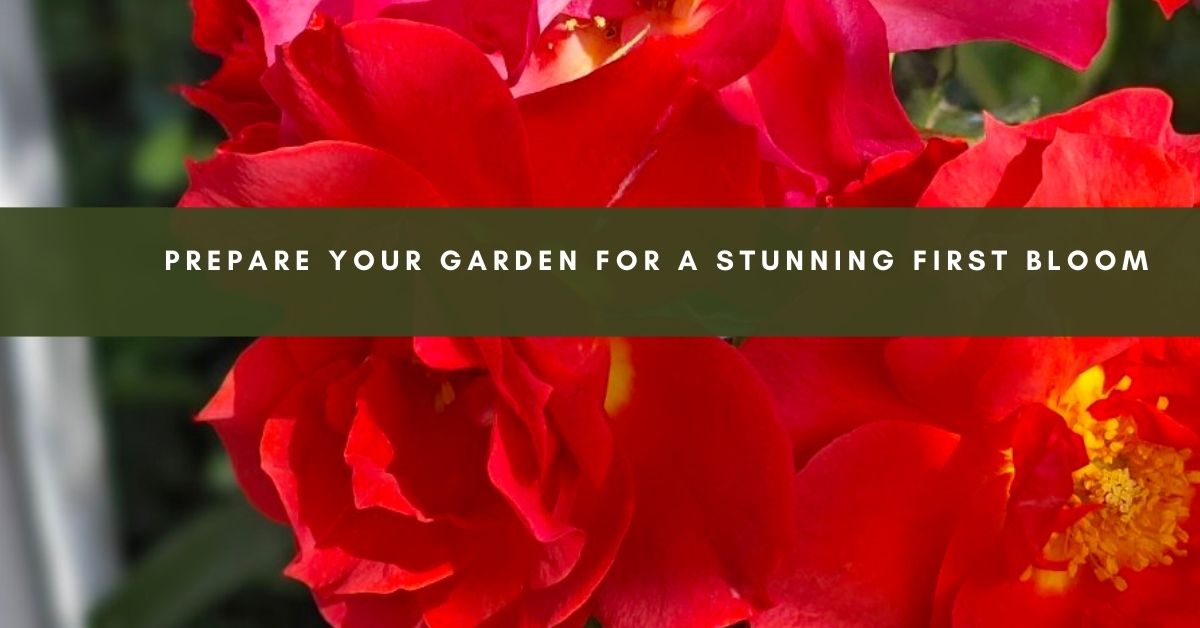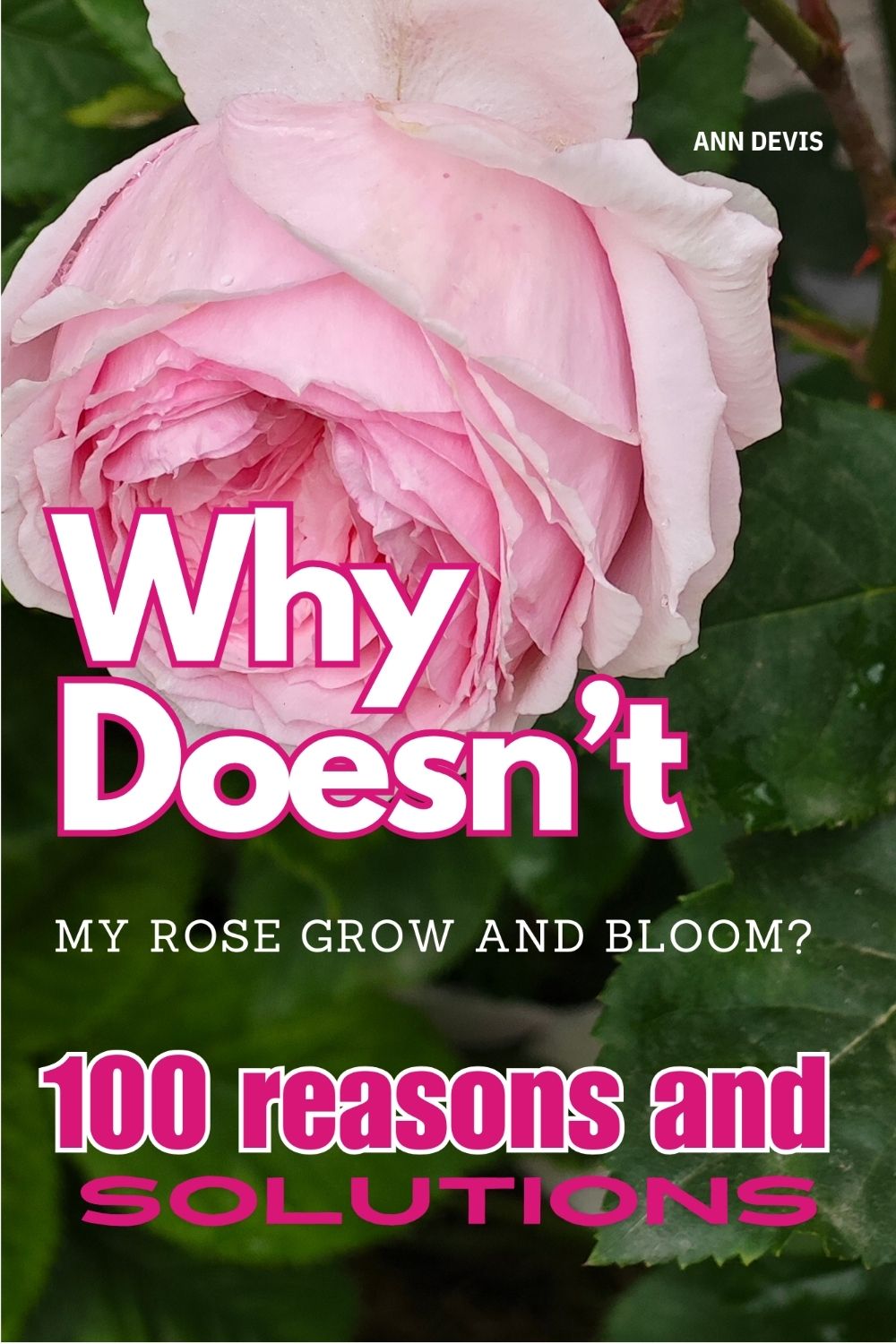Hello, fellow garden enthusiasts! I’m Ann Devis, and I am thrilled to share my passion for nurturing roses into vibrant, fragrant masterpieces. As spring approaches, I can’t help but feel excited for the first hints of color and life emerging from my garden. In this article, I’ll guide you through my tried-and-true methods for Spring Fertilizing Roses, ensuring that your beloved blooms are set for a spectacular debut. So, grab your gardening gloves, and let’s dive into the art of preparing roses for their first bloom!
Why Spring Fertilization is Essential for Roses
After a long, quiet winter, our roses are ready to awaken from their dormancy. In my experience, the key to a stunning spring bloom is providing your roses with the right nutrients at the right time. Here’s why I always start with spring fertilization:
- Encourages Healthy New Growth: A nutrient boost in early spring helps develop strong roots, lush foliage, and robust flower buds.
- Enhances Flower Production and Fragrance: Proper fertilization produces more abundant and beautifully scented blooms.
- Strengthens Plants Against Pests and Diseases: A well-fed rose is better equipped to fend off common pests and resist diseases.
- Improves Soil Structure: Fertilizers, especially organic ones, enhance the soil’s ability to absorb nutrients and retain moisture.
When to Fertilize Your Roses in Spring
Timing is crucial. I’ve noticed that:
- In warmer climates: Fertilize from late February to early March.
- In cooler climates: Wait until mid to late April, just after the last frost, when new leaf buds emerge.
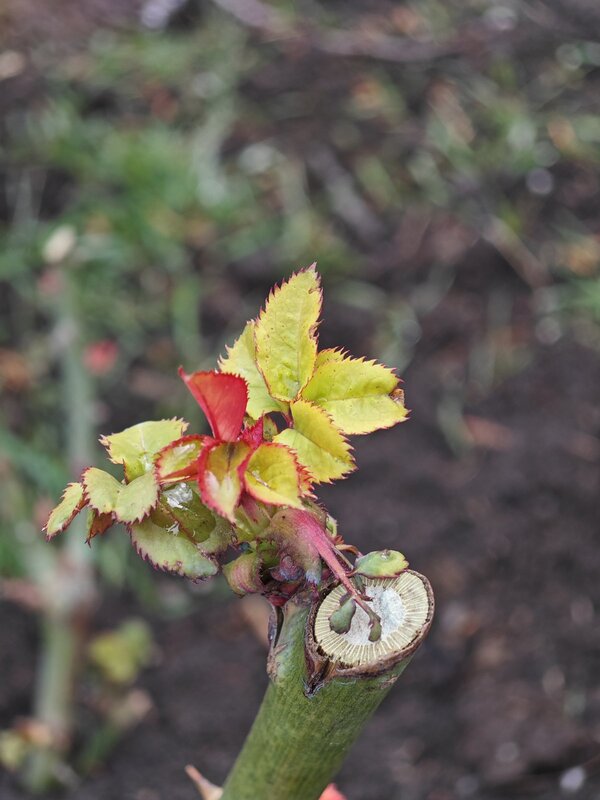
Preparing Your Roses for the First Bloom
Before I even think about sprinkling fertilizer, I ensure my roses are prepped to soak up all those precious nutrients. Here’s how I prepare them:
Pruning for Strong Growth
Every spring, I start by pruning my roses. It might seem like a drastic step, but it’s essential for:
- Removing Dead or Damaged Branches: This tidies up the plant and prevents disease.
- Improving Air Circulation: More airflow means healthier growth.
- Shaping the Plant for Balanced Growth: I always cut at a 45-degree angle just above outward-facing buds to encourage the rose to grow outward, allowing each bloom its moment in the sun.
Cleaning and Soil Preparation
Next, I give the Soil some love:
- Clear Debris: I remove fallen leaves and old mulch to avoid fungal diseases.
- Loosen the Soil: I aerate the Soil using a garden fork to help the roots access nutrients more effectively.
- Add Mulch: A fresh layer of organic mulch—straw, bark, or compost—retains moisture and enriches the Soil, setting the perfect stage for growth.
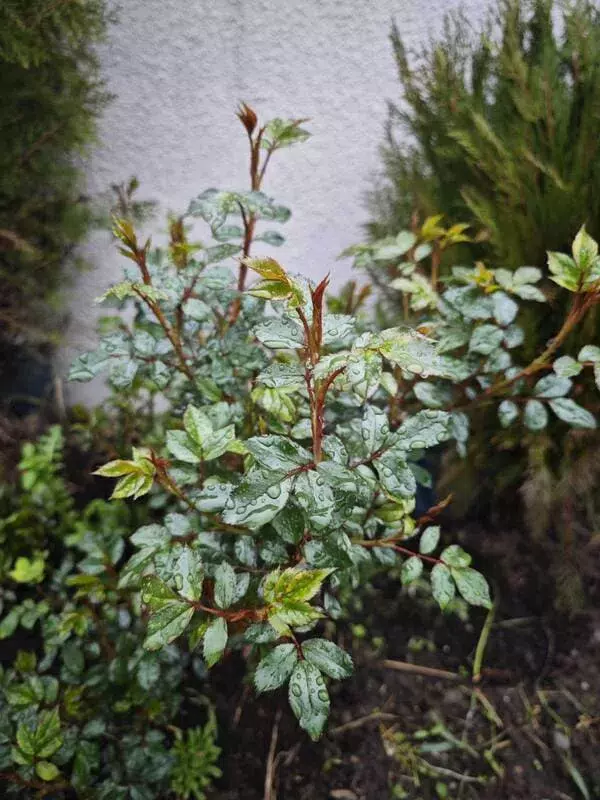
Organic Fertilization Methods for Roses
I’ve always believed in working with nature rather than against it. Organic fertilization nourishes the roses and promotes a healthy, sustainable garden. Let’s explore my favorite organic methods.
Best Organic Fertilizers for Roses
Here are some natural options that I swear by:
Compost Tea:
Rich in beneficial microbes, this liquid gold improves soil texture and water retention. I brew my compost in water for 24 hours and apply it at the base of my roses weekly.
What It Does:
Compost tea is a liquid extract of compost, loaded with beneficial microorganisms that help break down organic matter and release essential nutrients in a form that roses can easily absorb.
Why It’s Useful:
It improves soil texture, increases nutrient availability, and acts as a probiotic for Soil. This results in stronger root development and healthier foliage, setting the stage for robust growth and vibrant blooms.
• Banana Peel Fertilizer:
Banana peels are high in potassium, which helps develop stronger stems and more vibrant blooms. I simply bury chopped peels around the base of my rose bushes.
What It Does:
Banana peel fertilizer provides a natural source of potassium and phosphorus—key nutrients that help develop stronger stems and promote vibrant, healthy blooms.
Why It’s Useful:
Potassium enhances water regulation and stress resistance in roses, while phosphorus supports the development of flower buds. This method gently enriches your Soil, ensuring your roses receive the balanced nutrition they need for growth and bloom production.
• Fish Emulsion:
This fertilizer boosts nitrogen levels, encouraging lush foliage growth. I mix it with water per the package instructions and apply it every two weeks.
What It Does:
Fish emulsion is rich in nitrogen, essential for lush, green foliage.
Why It’s Useful:
The nitrogen boost helps stimulate vigorous leaf growth, supporting energy production for blooming. Additionally, fish emulsion helps maintain a healthy microbial balance in the Soil, leading to robust roots and a resilient plant structure.
• Epsom Salt (Magnesium Sulfate):
I dissolve one tablespoon in a gallon of water for dark green foliage and enhanced chlorophyll production and apply it monthly.
What It Does:
Epsom salt supplies magnesium, an essential element that aids chlorophyll production, leading to darker, more vibrant green leaves.
Why It’s Useful:
This nutrient enhances the overall color and vitality of the foliage and improves the absorption of phosphorus and other minerals. A monthly application ensures your roses maintain a healthy, vigorous growth cycle, vital for a stunning first bloom.
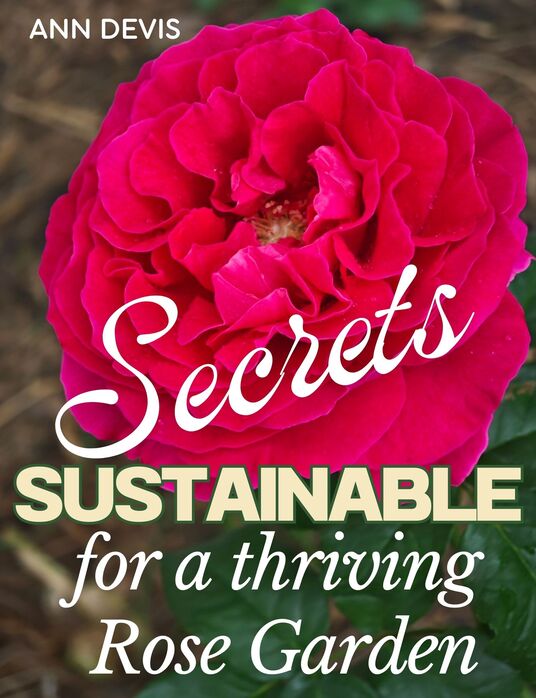
The Organic Rose Revolution: Grow Stunning Blooms, Naturally
- Unlock the secrets of nurturing your roses organically with our guidance on soil health, natural fertilizers, and sustainable pest control methods. Your garden will thrive with eco-friendly care that respects nature’s balance.
- Empower yourself with the knowledge to craft natural remedies for common rose ailments.
- Banish pests from your garden precisely using proven strategies that safeguard your roses without harsh chemicals. Keep aphids, mites, and other invaders at bay while preserving your garden’s natural harmony.
- Explore a world of breathtaking rose varieties carefully curated to captivate your senses and elevate your garden to new heights of beauty.
• Alfalfa Meal:
In early spring, the Soil around each bush is mixed with nitrogen and triacontanol, a natural growth stimulant.
What It Does:
Alfalfa meal is a rich nitrogen source and contains triacontanol, a natural growth stimulant encouraging robust plant growth.
Why It’s Useful:
It builds strong cell structures, supporting heavy blooms and prolonged flowering periods. The nutrients in alfalfa meal work synergistically to promote both vigorous growth and improved overall plant health.
• Manure (Aged or Composted):
It provides a slow-release supply of nutrients. I often mix well-rotted manure into the Soil or use it as a nourishing mulch layer.
What It Does:
Manure is a traditional, slow-release fertilizer that steadily provides essential nutrients.
Why It’s Useful:
Its organic matter improves soil texture, water retention, and overall fertility. When well-composed, manure enriches the Soil with essential nutrients and beneficial microbes, contributing to a robust root system and healthier, more resilient roses.
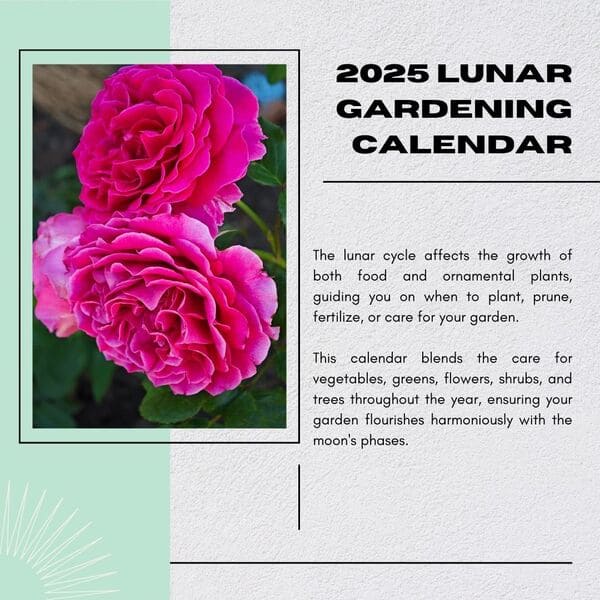
Get Your Free Lunar Gardener's Calendar 2025!
Join the Lunar Gardening Revolution! Subscribe now to receive our exclusive Free Lunar Gardener’s Calendar for 2025. Harness the power of the moon to optimize your planting, nurturing, and harvesting.
Liquid Organic Fertilizers for Roses
For a more immediate nutrient boost, I also use liquid feeds:
Fermented Grass Infusion:
Made from nutrient-rich weeds like nettle and dandelion, I prepare it by filling a 200-liter barrel halfway with chopped grass, adding a few tablespoons of soda ash or urea, topping it up with water, and letting it sit for 5–7 days. After straining, I dilute one liter of infusion in five liters of water before application.
What It Does:
This infusion is prepared from nutrient-rich weeds such as nettle and dandelion, offering a balanced mix of nutrients and beneficial microbes.
Why It’s Useful:
The fermentation process unlocks minerals and organic compounds that improve nutrient uptake. It promotes healthy root and foliage development, ensuring vigorous growth and enhanced disease resistance.
• Mullein Infusion (Cow Manure):
Rich in nitrogen, I mix one part mullein with eight to ten parts water, let it sit for 5–8 days, and then dilute by half before applying around the base of the roses.
What It Does:
Cow Manure infusion is a natural nitrogen booster that supports the development of strong, green foliage.
Why It’s Useful:
Nitrogen is critical for encouraging lush leaf growth, providing the energy needed for abundant blooms. This infusion also aids in building a sturdy structure by fostering robust root development, leading to healthier plants.
• Bird Droppings Infusion:
High in nitrogen and phosphorus, I mix one part bird droppings with 20 parts water, allow it to sit for 3–8 days, and then dilute the mixture 1:3 with water for a robust nutrient feed.
What It Does:
This infusion is exceptionally high in nitrogen and phosphorus, vital nutrients for healthy, thriving roses.
Why It’s Useful:
Nitrogen fuels leafy growth, while phosphorus is essential for flower formation. When properly diluted, bird droppings infusion acts as a potent enhancer that accelerates growth and ensures your roses are well-nourished during the crucial spring season.
Organic Pest & Disease Protection
A well-fertilized rose is healthy, but sometimes, we need an extra layer of defense. I rely on organic solutions to keep pests and diseases at bay:
Nettle Solution:
This solution boosts immunity and helps prevent fungal infections. I soak fresh nettles (including roots) in water for 24 hours (using 2–3 plants per bucket), strain the liquid, and spray it on the roses. For a fermented version, I let it sit for several days until fermentation begins—always testing on one leaf before a complete application.
What It Does:
Nettle solution is derived from soaking fresh nettles, which release natural compounds that bolster the plant’s immune system.
Why It’s Useful:
These compounds help deter fungal infections and other pathogens, acting as mild pesticides and fungicides. They’re like giving your roses a vitamin boost, enhancing their resilience against diseases.
• Alfalfa Infusion for Growth Stimulation:
To enhance photosynthesis and promote vigorous new shoots, I mix 12 cups of alfalfa pellets, 1 cup of magnesium sulfate, 1 cup of fish emulsion (optional), and ½ cup of chelated iron in a 100-liter tank. After filling the tank with water and letting it sit for a week (stirring daily), I dilute it 1:1 with water and apply it monthly in spring and summer, stopping by the end of July.
What It Does:
This infusion combines alfalfa pellets, magnesium sulfate, fish emulsion, and chelated iron to create a powerful growth stimulant.
Why It’s Useful:
The blend enhances photosynthesis and promotes vigorous new shoots. It’s particularly effective during the first flowering cycle, ensuring your roses produce the best possible blooms while maintaining overall plant vitality.
Common Mistakes to Avoid When Using Organic Fertilizers
While organic fertilizers offer a natural, eco-friendly way to nourish your roses, I’ve learned through experience that even the best methods can go awry if not applied correctly. Here are some of the main mistakes I’ve encountered—and sometimes even made myself—when using organic fertilizers for roses.
1. Over-Application and Nutrient Overload
One of the most common errors is simply using too much fertilizer. It’s tempting to think that more nutrients will lead to more blooms, but over-fertilizing can harm your roses. Excessive nutrients may cause:
- Root Burn: Like overfeeding any living thing, too many nutrients can “burn” the roots, leading to stunted growth.
- Nutrient Imbalance: When one nutrient is in excess, others may become deficient, which can upset the delicate balance your roses need for robust health.
I’ve learned to always stick to the recommended amounts, even if it means applying the fertilizer more frequently in lower doses.
2. Improper Dilution of Liquid Fertilizers
Liquid organic fertilizers such as compost tea, mullein infusion or poultry manure infusion are potent and need to be handled with care. A common mistake is not diluting them properly. These are very powerful nitrogen fertilizers, so the rule of thumb here is better little by little. Here’s why it’s important:
- Risk of Burn: Concentrated solutions can quickly overwhelm delicate roots and foliage, leading to burns or yellowing leaves.
- Uneven Nutrient Distribution: Incorrect dilution can cause hotspots where nutrients accumulate, which may lead to localized damage in your rose bushes.
Garden tips
Always double-check the dilution ratios provided in the recipes, and if you’re ever in doubt, err on the side of a more diluted mix
3. Applying Fertilizer at the Wrong Time
Timing is everything when it comes to fertilizing roses. Applying organic fertilizers at the wrong time can diminish their effectiveness and harm your plants. Consider these timing pitfalls:
- Too Early or Too Late: Fertilizing before the buds have fully started to emerge or after the growing season has peaked can disrupt the natural cycle of your roses.
- Extreme Weather Conditions: Applying fertilizer during a heatwave or just before a heavy rain can lead to nutrient loss or shock the plant. I always aim for mild, consistent weather to ensure the nutrients are absorbed effectively.
4. Neglecting Soil Testing and Preparation
Organic fertilizers work best when the Soil is properly prepared. One mistake I often see is neglecting to test the Soil’s pH and nutrient levels before application. This can lead to:
- Nutrient Imbalances: Without knowing what your Soil already contains, you might add too much of one nutrient while overlooking another.
- Poor Fertilizer Uptake: If the Soil is compacted or laden with Debris, even the best organic fertilizer won’t reach the roots efficiently.
Before fertilizing, I always clear away Debris, aerate the Soil, and sometimes even run a simple soil test to tailor my approach to my roses’ specific needs.
5. Using Uncomposted or Improperly Fermented Materials
Not all organic materials are created equal. For instance, fresh manure or unfermented compost tea can introduce harmful pathogens or lead to a too-strong nutrient surge. Here’s what to keep in mind:
- Health Risks: Fresh manure can harbor pathogens that might harm your roses or even your garden’s ecosystem.
- Inefficiency: Unfermented materials haven’t yet broken down into forms that your plants can readily use, reducing their effectiveness.
I’ve found that patience is key. Ensuring that manure is well-composed and that infusions are allowed to ferment properly before use goes a long way in safeguarding the health of my roses.
6. Relying Solely on One Type of Fertilizer
While it may be convenient to stick to one type of fertilizer, relying on a single source of nutrients can lead to an unbalanced diet. Try to use different types of organic fertilizers. Each organic fertilizer has unique properties:
- Diverse Nutrient Needs: Different aspects of plant growth require different nutrients. For example, banana peel fertilizer is excellent for potassium, while fish emulsion boosts nitrogen.
- Long-Term Soil Health: Rotating and combining different organic fertilizers ensures that your Soil remains balanced and complete in life, which is vital for continuous, healthy blooms.
Mixing methods and paying attention to your roses’ responses can create a more balanced and sustainable feeding regimen.
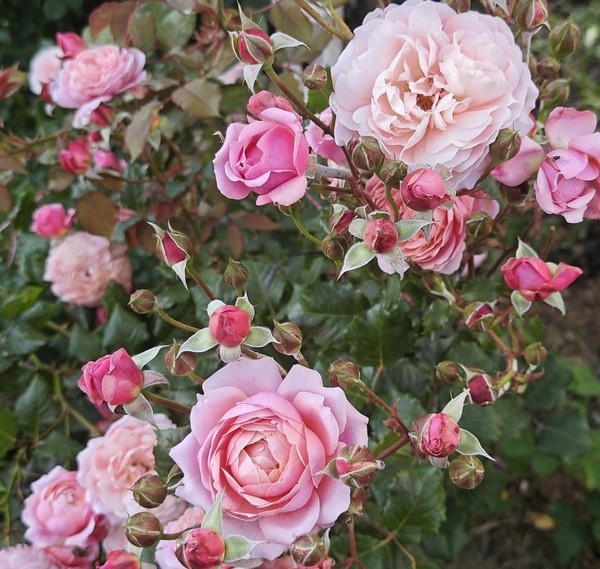
Watering & Additional Care After Fertilizing
After feeding your roses, proper watering is essential to help the nutrients reach deep into the roots. Here’s my approach:
- Water Deeply: A thorough watering ensures all the nutrients seep into the roots.
- Sunlight: Ensure your roses get at least 6–8 hours of direct sunlight daily.
- Monitor Pests: Look for aphids, mites, and other common pests. If I notice any unwelcome visitors, I often introduce ladybugs or use neem oil spray.
Boosting the First Flowering Cycle
To truly make the most of your spring fertilization, consider these extra tips:
- Regular Organic Feeding: I apply organic fertilizers every 3–4 weeks throughout spring to sustain healthy growth.
- Pause in Late Summer: Stop fertilizing in late summer to give your roses time to prepare for dormancy.
- Mulching: A generous layer of organic mulch helps keep the Soil moist and prevents weeds, creating an ideal environment for continuous blooming.
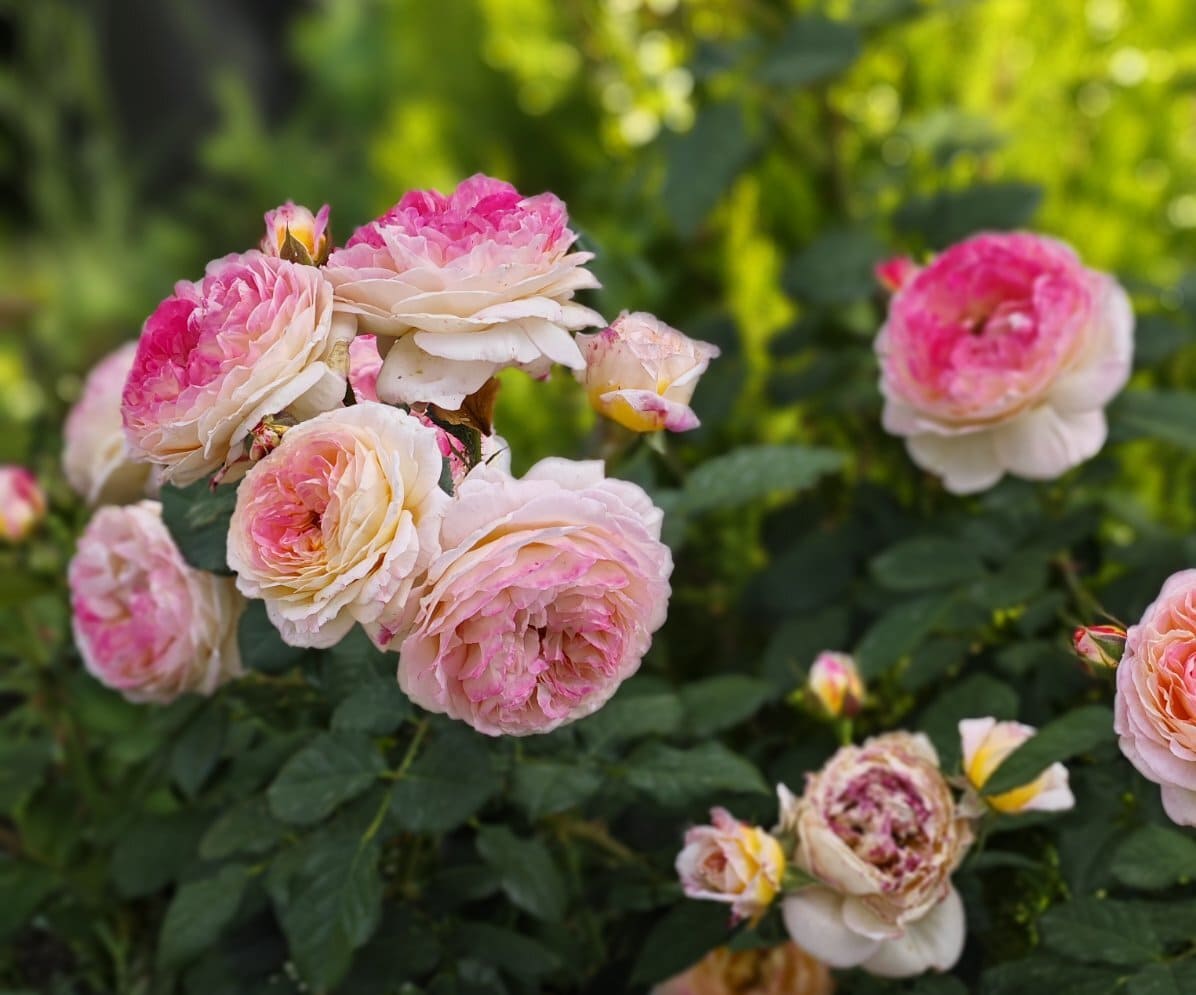
The care we put into their spring fertilization transforms our roses into living, breathing works of art. Whether you’re an experienced gardener or just starting out on your floral journey, I hope my experience with spring rose fertilization inspires you to create a garden that is as vibrant and soulful as your dreams. Feel like an artist creating a colorful painting.
After all, caring for roses is also an art, and you can do it.
It is the magic of nature and is waiting for you to bring it to life!
Want more gardening tips? Subscribe to our newsletter for monthly advice straight to your inbox!
Frequently Asked Questions about rose Fertilizing
It’s best to use them every 3–4 weeks during the spring. Just follow the dilution instructions carefully to avoid overfeeding your plants.
Beyond fertilization, deep watering, ensuring adequate sunlight and vigilant pest monitoring are crucial. A good mulch layer can also help maintain moisture and keep weeds at bay.
The ideal time depends on your climate. In warmer areas, start in late February and continue until early March. In cooler regions, wait until mid to late April, once the last frost has passed and new buds emerge.

